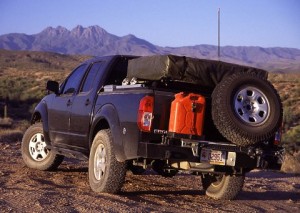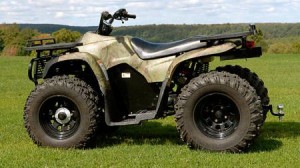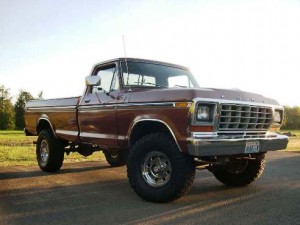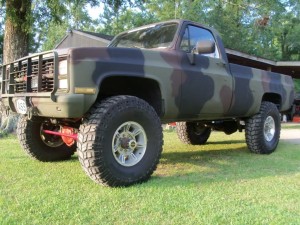 Whether you’re planning for the potential evacuation of your home due to an emergency such as a hurricane, tornado or flood, or you’re interested in bugging out in the event of widespread civil unrest or societal collapse, a bug out vehicle (BOV) can be a huge boon for you and your family. Not only can you travel further and faster in a vehicle, a good BOV will also allow you to haul a substantial amount of extra supplies, such as your bug out bag, clothing, ammunition and guns.
Whether you’re planning for the potential evacuation of your home due to an emergency such as a hurricane, tornado or flood, or you’re interested in bugging out in the event of widespread civil unrest or societal collapse, a bug out vehicle (BOV) can be a huge boon for you and your family. Not only can you travel further and faster in a vehicle, a good BOV will also allow you to haul a substantial amount of extra supplies, such as your bug out bag, clothing, ammunition and guns.
Essential Features
A lot of things about your BOV can be adapted for your specific circumstances, your budget, to the particular environment in your region and so forth, but some features are essential. First, a good BOV should have 4-wheel drive.Ultimately you’ll have to make do with whatever you have at the time you actually have to bug out, but a vehicle with 4WD has the potential to get you over a much wider variety of terrain than a standard 2WD. (Note: Motorcycles are rather exempt from this consideration, for obvious reasons.)
A good BOV also needs to be fuel efficient and have a good range, as I’ll discuss in more detail in a moment, but the 4WD is really essential. Road conditions in a bug out situation are liable to be hazardous if not completely impassable, depending on your area and the sort of disaster that has occurred. If you have to travel along damaged roads or you’re forced to drive off road, you’ll need 4WD, preferably on a vehicle with good all-terrain tires and decent ground clearance.
Space is another essential feature of your BOV. You need a vehicle that can realistically hold you, any additional family members, and all of your extra supplies and the gear you want to bug out with. In your BOV doesn’t get the greatest MPG, you may also have to factor additional fuel into the equation, so you’ll need a fairly sizeable vehicle.
A lot of people favor the use of an older car as their bug out vehicle, and there are some good reasons why an older vehicle is worth considering. One of the most popular reasons is that older vehicles are more likely to function after a serious EMP attack or natural EMP event. Older vehicles have few to no computerized systems on board, so an EMP is less likely to render them inoperable compared to modern cars that rely on computer chips for practically everything.
Older vehicles also have a reputation for rugged construction and the relative ease of maintenance that accompanies their fewer parts and lack of sophisticated electronic or computerized systems. With a bit of mechanical know-how, it can also be much easier to find compatible spare parts for an older vehicle than for modern vehicles.
Military Surplus or Retired Vehicles
If you have the extra money to invest, a military surplus vehicle can serve you admirably as your BOV. With vehicles ranging from field jeeps to the M35 deuce and a half and beyond, military vehicles are a natural choice for reliability, durability and functionality. Surplus vehicles are often available at auction or for sale via a number of online and other retailers.
MPG & Range
How far your BOV will need to travel largely depends on how far you need to travel to reach safety in the event of an emergency that displaces you from your home. A good general rule of thumb is that you should be able to get 400 – 600 miles or further in your BOV. This may mean you get great gas mileage, or it may mean that you carry extra fuel or have a fuel stash hidden along your intended bug out route.
When gauging the distance you will need to travel, and the amount of fuel you will therefore need, always remember to take detours into consideration. Reaching your bug out location by the most direct route would be nice, but it may not be possible if or when the time comes. So plan accordingly and keep a set of good old fashioned highway and county road maps on hand.
Diesel vs. Gas
When it comes to bug out vehicles, diesel engines have a whole host of benefits that make them extraordinarily popular among BOV enthusiasts. That said, not everyone wants or can afford to drive a diesel rig, especially if you need to use your BOV as a daily commuter in the meantime. The biggest advantage of a diesel engine is the fact that it can run on a wide array of fuel types, including home heating or red diesel oil. Some diesel engines can run on used motor oil, while most diesel engines can run on (or be adapted to run on) vegetable oil and other alternatives.
Most farm equipment also runs on diesel engines, so you have added cross-compatibility in the type of fuel you should stockpile for your BOV and other farm equipment. The final big point in favor of diesel is that diesel fuel can be stored up to 10 times longer than gas, and that kind of lifespan makes a big difference in a post-SHTF scenario.
You might not have put a lot of thought into the color of your potential BOV, but it’s an important factor to consider. Flashy cars in bright, dazzling colors might look great in the city, but a brightly colored vehicle is not conducive to bugging out in an emergency situation where you want to fly below the radar as much as possible.Now, you don’t have to schedule an appointment to have your BOV redone with a new camo paint job, but you can choose a vehicle with a nice shade of green or brown paint, or have your current vehicle repainted.
Location, Location, Location!
The primary purpose of a BOV is to get you the heck out of dodge as safely, quickly and as efficiently as possible. Aiming for the wilderness and gunning it when a natural disaster strikes or civil chaos and the breakdown of society ensue is a poor plan of action, though. So start planning now, decide what you intend to pack out with you in your bug out vehicle, and put some serious thought into where you will actually go.
A bug out location in the remote countryside, at least several miles away from any highways or main county roads, is ideal. If you’re in the market for a property, look for land that offers natural strategic advantages, such as hills where you can setup lookouts. You want a property that is as discreet and defensible as possible. Water is an especially crucial resource, so your bug out location should have access to freshwater from a spring, stream, a river, or from a well.
In the case that you are bugging out to a relative in an unaffected region, be sure to have several routes planned to get you between your home and theirs. Plan multi-day drives to stop in areas that are as secure as possible, and plan to top up your fuel at every available opportunity.
Transportation Afterwards
 You’ll still need to be able to get around after SHTF, but if society is in ruins then the days of any motorized vehicle are going to be rather numbered. Bicycles are a fantastic alternative method of transportation, especially hardier mountain bikes, but even a city bike will be useful if you end up staying in the city. Horses are a long-established form of transportation, still in use in many rural areas throughout the US and the world, but they do require considerable upkeep.
You’ll still need to be able to get around after SHTF, but if society is in ruins then the days of any motorized vehicle are going to be rather numbered. Bicycles are a fantastic alternative method of transportation, especially hardier mountain bikes, but even a city bike will be useful if you end up staying in the city. Horses are a long-established form of transportation, still in use in many rural areas throughout the US and the world, but they do require considerable upkeep.
Small, battery-powered ATVs or motorcycles that run on biofuel or rechargeable batteries may also be viable if you have an adequate wind or solar power source, or access to biofuels. Ultimately, your body is the final fallback, so hopefully you have adequate mobility to get where you need to go if necessary. If you do end up on foot, you can make things a lot easier by ensuring that you at least have proper footwear and basic supplies appropriate to your region.


